Emil Nolde – Let’s Mingle!
by David Fox
Emil Nolde was a German-Danish Expressionist painter, known for his unbridled passion for a rather crude but compelling style of artwork that was labelled as “degenerate” by Hitler and the Nazis, whom Nolde admired and sought acceptance by.
But how could he gain acceptance back then, when the bulk of Nolde’s very expansive body of work seemed to take the sacred and make it profane, or reveal a vulgar side of humanity that was not ready to seen by common folk? Did Nolde himself not see this? Or was he too busy pushing boundaries in a time and place when this was less than appreciated?
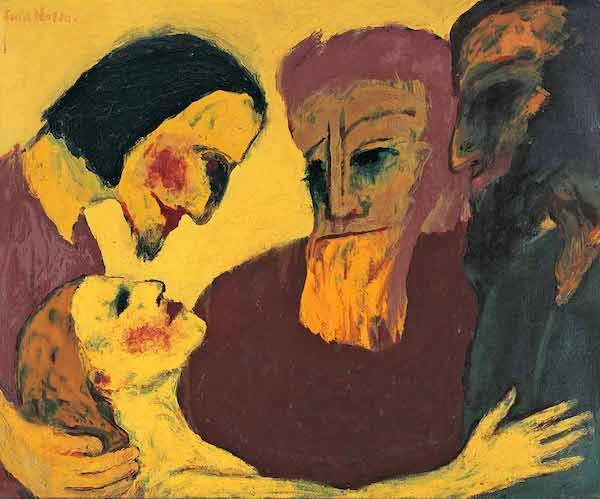
For some reason, Nolde believed he would be accepted and embraced by Germany, which he loved, but his reward for his creativity was to become an outcast.
Degenerate Artist
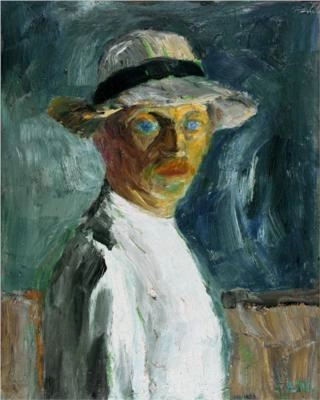
Irony could be applied to Nolde in several ways through his life. For one, he supported the 3rd Reich, but his painting style was seen as abhorrent by the persnickety political party. Unrequited love, it seemed.
Second irony was that, while the Nazi’s hated his art for being primitive and unethical, they ironically somehow managed to give Nolde free promotion, by way of an 1937/38 “degenerate” art show which many German people saw. More on this show in a moment.
As with today’s so called “cancel culture”, which sees people emotionally react with extreme un-acceptance to anything that disagrees with their fickle sensibilities, the Nazi’s too felt it appropriate to suppress creative expression as they rose to power, deeming Nolde’s artwork morally questionable and highly objectionable. In other words, they tried to have him censored, or “cancelled” as we call it in 2020.
What did the Nazi’s object to about Nolde’s work, you ask? Well, for one thing, Nolde’s work displayed some wild tendencies, both in terms of brushstroke and subject matter, depicting provocative nudes moving in savage ways, as well as exploring the culture of other races. This type of curiosity was the opposite of the Nazi’s worldview. Nolde also made some sort of mockery of religion.
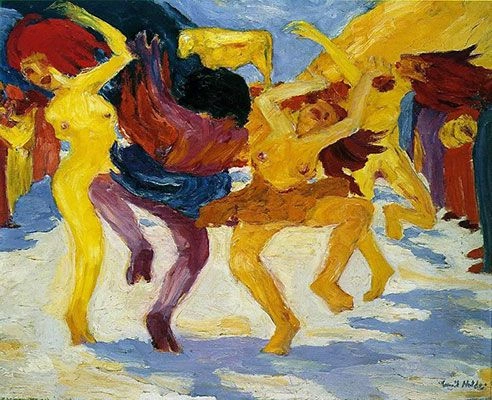
So, in their particularly heinous way, the supremely pompous Nazi’s took all of the aforementioned wretched artwork, like that of Nolde’s, which they (the Nazis, with Goebbels being the spearhead of the movement) then placed in one show in Munich to show what unpatriotic, unacceptable art looks like. This is the show I mentioned – the Degenerate Art Show.
Here is a video talking about the event.
By all accounts, Emil took all of this rejection in stride, as it never once prevented him from continuing to create.
Despite all challenges he faced through his life, what with being somewhat of an outcast in his homeland, Emil Nolde never stopped creating, becoming increasingly dynamic and bold with his artistic vision of the world.
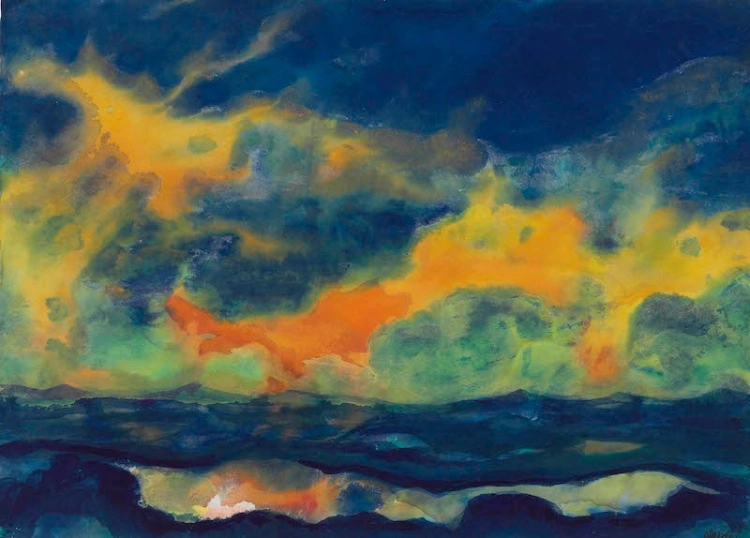
Background
Let’s go back to the beginning, when this future rabble rouser was born.
Emil Nolde was born on 7th August 1867 in Nolde, Germany. His real name was Emil Hansen, but he changed it to match the name of his home town at the Danish-German border in later years, when he became a more well-known artist.

He wasn’t interested in painting at first, but the boy’s attraction to art became clear in his teenage years.
At 17 years old, the young man started an apprenticeship as a wood sculptor and draftsman at the Sauermann furniture factory and wood-carving school in Flensburg.
As he got older, Emil worked as a woodcarver in furniture factories in Munich and Karlsruhe, where he also attended the school of applied arts and took figure-drawing classes.
His first experiences with painting led him to the Friedrich Fehr’s (pictured below) painting school and later to the Hölzel school in Dachau.
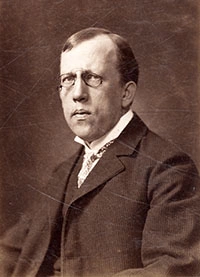
In 1899, he traveled to Paris, where he attended the Académie Julian and undertook his own studies in the famous center of every young painter – the Louvre.
At the beginning of the 20th century, following his marriage with a Danish actress, Ada Vilstrup, the artist has changed his name officially from Hansen to Nolde.
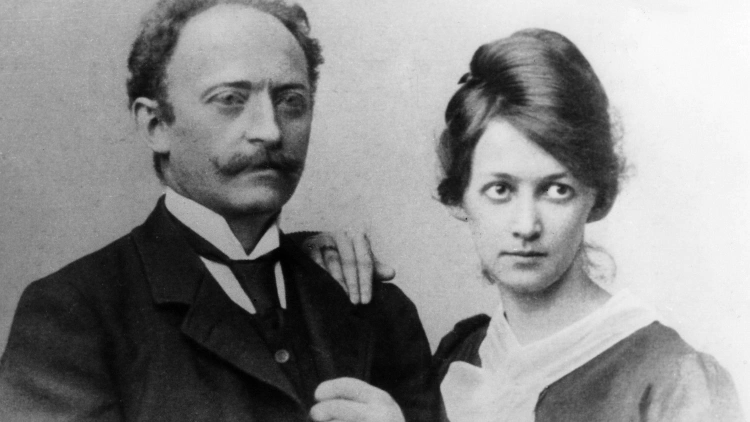
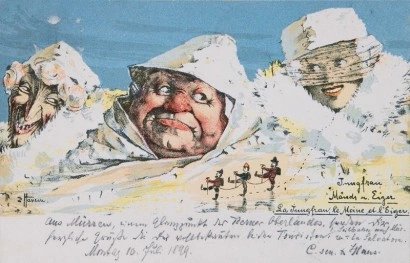
The couple was travelled together through Denmark and Germany, until their relocation in Berlin, which became their home.
Growing Hunger for Art
At the beginning of the 20th century, Emil Nolde became an active member of a rich cultural and social life in Germany.

For a while, he participated in the art group named “Brücke” (The Bridges), during which he met a famous Expressionist, Norwegian Edward Munch, whose artworks Nolde admired.
Even though they didn’t become close friends, they followed each other careers as long as they lived. Their work, after all, does share some similarities in its brazenness alone, you might say. Both artists certainly knew their way around a tortured face.

Ideas and Themes
Next to his active social life, Nolde was inspired to create artworks, which reflected various themes and ideas.
Since he was an Expressionist and had used many vivid colors in his works, one of the objects he enjoyed painting was flowers.
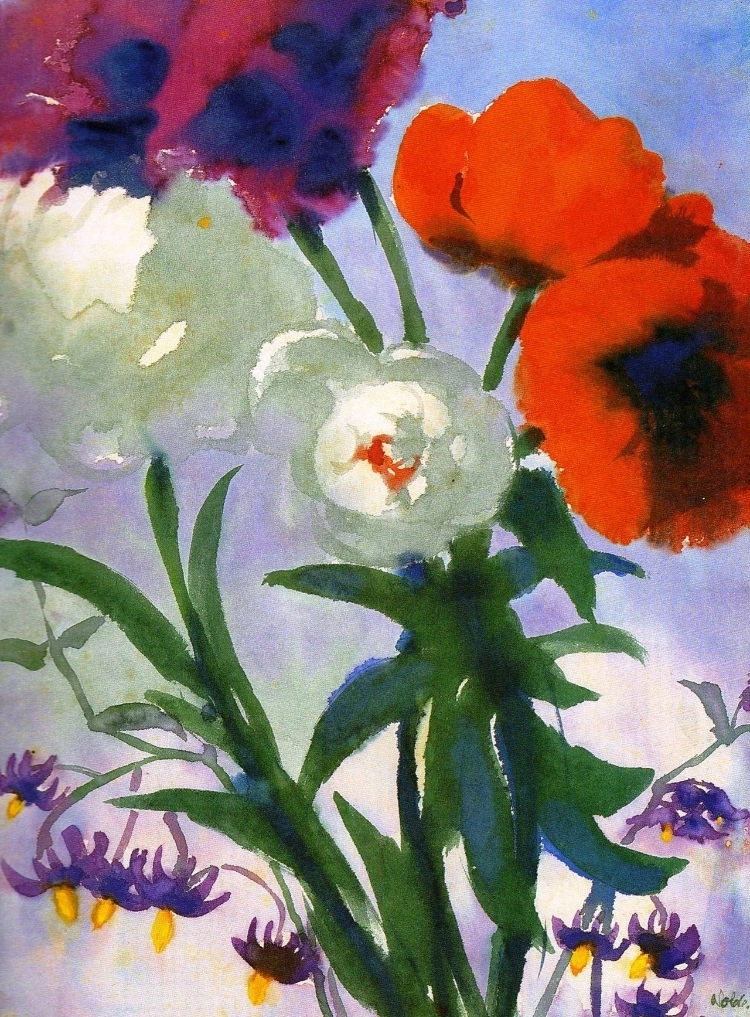
Art historians have noted that Nolde was inspired by a Dutch master Vincent Van Gogh, who used many bright colors and had created his iconic sunflowers. That said, Nolde was no slouch with flowers himself.
Next to these flowers, Nolde painted poppies and typical field flowers. His vibrant colors and dynamic brushes made them come alive.
In 1909, he started to create religious theme paintings – “Last Supper”, “Pentecost”, “Derision”, etc. He did so in a way that confused some of his countrymen – were religious works supposed to look like this? There was something odd about his depictions of religious scenes that did not sit well with the powers that be of that time.
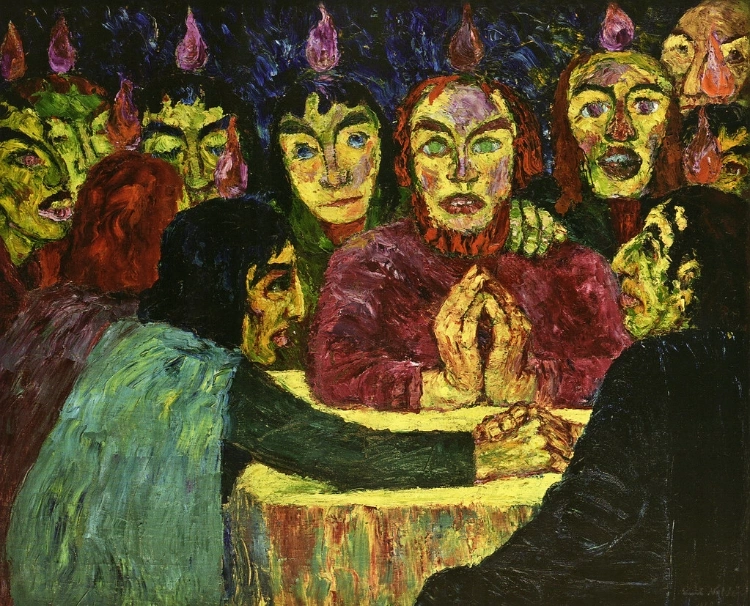
This idea of religious paintings did not leave him, and he continued along with this theme for a couple of years, and during 1911-1912 he painted one of the most important artworks in his career – the nine-piece “Life of Christ”.

“I followed an irresistible desire to represent profound spirituality, religion, and tenderness without much intention, knowledge, or deliberation.” – Nolde had written in his memoir. While this may have been his view of his own work, there was something unsettling about his work that would go on to rankle people.
That said, another theme that was important in Nolde‘s paintings was dance and dancers. He was amazed by this magnificent type of performing art, and loved to explore it in his work.
For instance, while spending his days in Berlin, Nolde was a frequent visitor at many theaters, circuses, cabarets, and cafes, where he had an opportunity to observe performers’ body movements and make his sketches.
Some of his well-known works of this period are “Wildly Dancing Children” (1909), “Dance Around the Golden Calf” (1910), and “Candle Dancers” (1912).
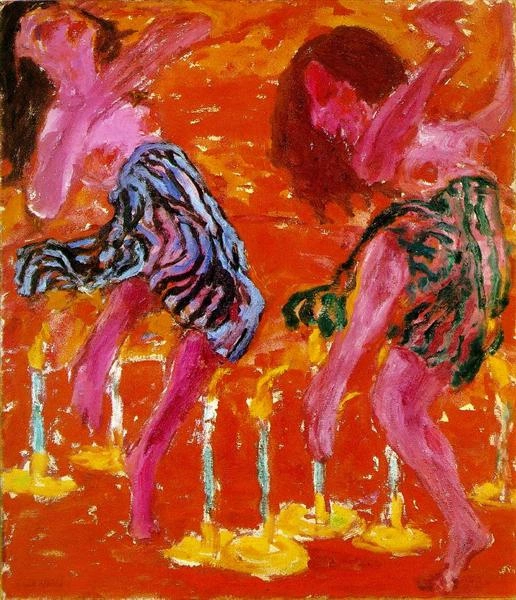
Living During Difficult Times
Many artists, who had worked during both World Wars, have been surrounded by uncertainty, poverty, and have been affected by different political regimes.
Since Nolde was living and working in Germany, his works were being watched by the Nazi Regime, as mentioned.
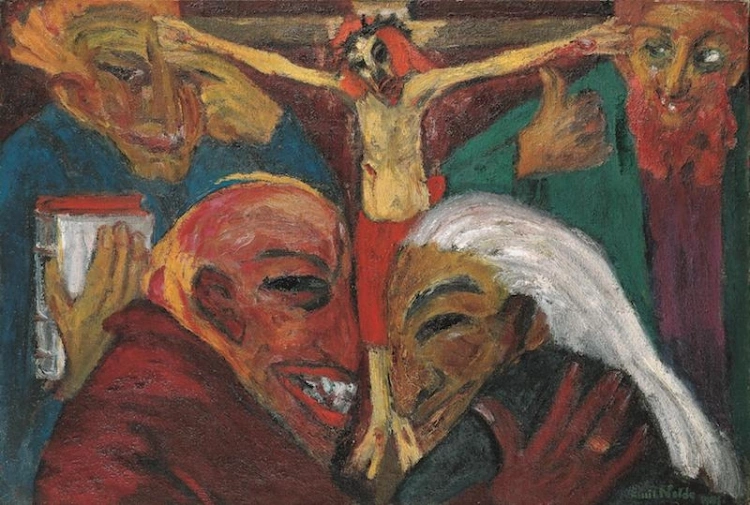
And now we come full circle.
As I said, Emil Nolde did not take a neutral position during the Nazi Regime. Art historian Peter Selz in his book, dedicated to German painter, had described Nolde’s personal views as anti-French and anti-Jewish.
According to him, the artist had expected to play an important role in the early 1930s, when Nazis came to power, therefore he found the right environment to fulfill his opportunistic ideas.
Although he did get attention from the Nazi party at the beginning of their ruling period, the attention he wanted was not the attention he got, and Nolde’s works were exhibited at the Degenerate Art Exhibition in Munich, in 1937.
To reiterate, Nolde was a very bold painter who loved color. The Nazi agenda was not inclined to have emotions stirred that they did not fully oversee. This is how Nolde had his falling out with the rising totalitarian force.
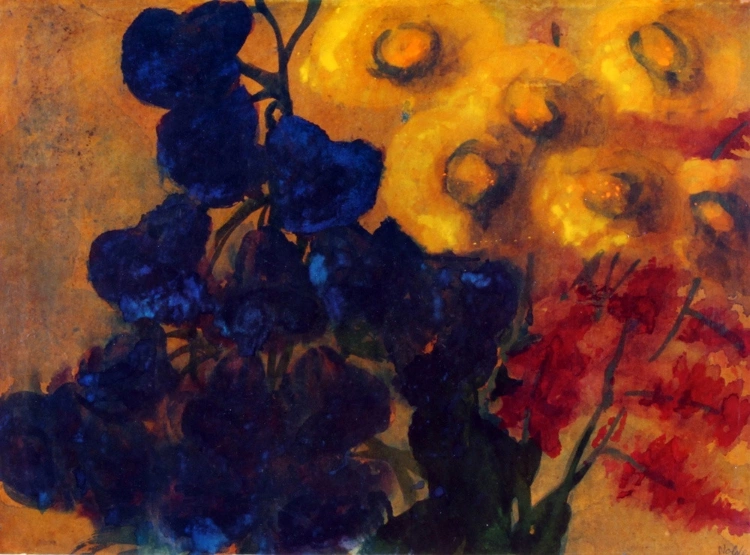
After his works were confiscated by the party, Nolde fought to get them back and succeeded.
Even after his own experience showed that he could have not trust the Nazi regime, he still continued support for Germany to win World War II and did not give up his beliefs.
In 2019, Germany‘s Chancellor Angela Merkel removed two Emil Nolde‘s paintings from her office.
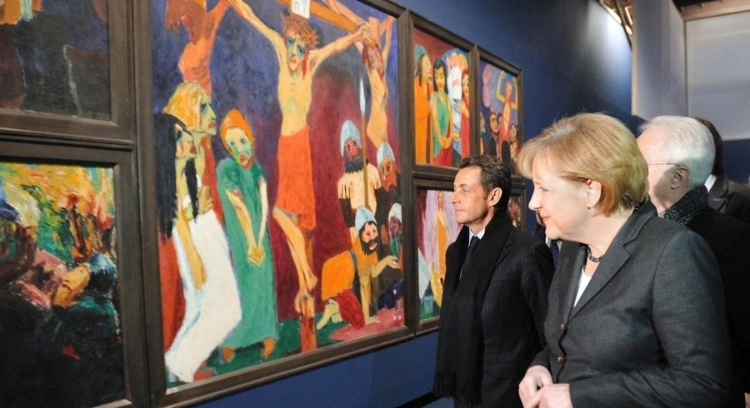
Poor Emil, the Nazis didn’t like you because you were too provocative, and today’s politicians don’t like you because you liked the Nazis. Can’t win, can you?
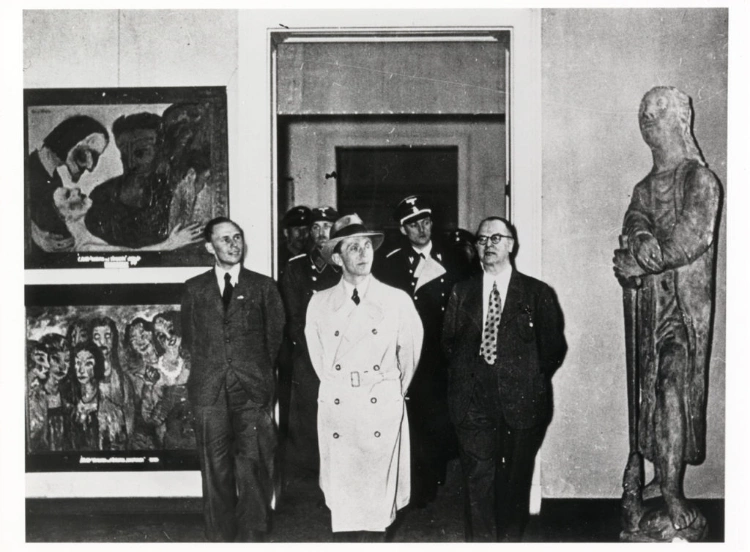
At any rate, this symbolic gesture of having his artwork removed attracted a lot of media attention, and was quickly understood as a non-acceptance of the artist’s pro-Nazi beliefs from the past. As I said at the beginning, Emil Nolde was an enigma – a proud nationalist who was rejected by his own countrymen for being seen as anti nationalist. Oh the humanity!
Still, I hope you have enjoyed this little exploration of his life and work.
Recommended Videos about Emil Nolde:

About David Fox
David Fox is an artist who created davidcharlesfox.com to talk about art and creativity. He loves to write, paint, and take pictures. David is also a big fan of spending time with his family and friends.
Leave a Reply
 |
 |
 |
 |
Just Art and Fun
Now get FREE Gifts. Or latest Free phones here.
Disable Ad block to reveal all the secrets. Once done, hit a button below
 |
 |
 |
 |